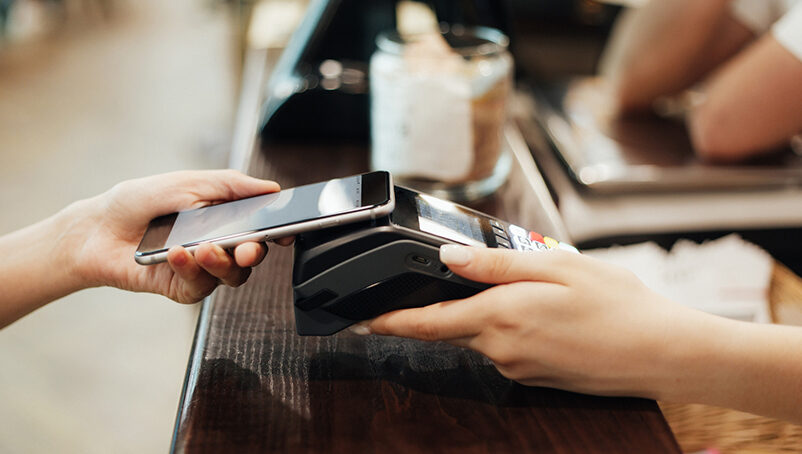The phrase “cash is king” is common among consumers and business owners alike. However, consumer payment preferences are changing rapidly — and mobile payments are on the rise. Will this payment method eventually dethrone cash?
Over the past few years, consumers have enjoyed the ease of tapping their smartphones when ready to checkout. In fact, mobile wallets accounted for over 25% of point-of-sale payments in 2020.
Increasingly, younger consumers are embracing mobile payments with as many as 70% of Millennials already using their phones to pay for goods and services. So, does this mean that your small business needs to accept mobile payments? Let’s take a quick look at in-person mobile and contactless payments.
(Keep getting paid: You can also learn about accepting credit cards here.)
What are mobile payments?
Mobile payments are a type of contactless payment made from a mobile wallet or app instead of cash, card or check. While contactless payments were a little slow to gain traction initially, mainstream adoption is quickly picking up. The coronavirus pandemic has pushed the trend further, in large part due to the heightened public sensitivity to germs and cleanliness.
By 2025, analysts estimate that nearly 60% of the world’s population will have a mobile wallet.
Whether or not you’ve adopted contactless payments for your business, you’re probably familiar with the major players in the industry. Square, Apple Pay, Samsung Pay and Google Pay account for most of the market.
Types of contactless payment options for small business
If you’re thinking about accepting contactless payments at your business, you must understand what types are available and how the technology works. Four leading technologies are available for you to use regarding contactless or mobile payments:
- Near Field Communication (NFC): Having been around for more than a decade, NFC is mainstream wireless technology. It enables short-range communication between compatible devices to submit data securely. Apple Pay and Google Pay use this technology, along with tap-to-pay credit and debit cards.
- Magnetic Secure Transmission (MST): The primary technology behind Samsung Pay, MST allows the payment app to mimic a magnetic strip card transaction. However, Samsung’s Galaxy S21 doesn’t support MST, which is a tell-tale sign that it’s being phased out.
- Quick Response (QR) codes: A QR code works in the same way as a barcode at the supermarket. Smartphone cameras scan the image, allowing customers to quickly “scan and pay” during checkout. Square, PayPal and Venmo offer QR contactless payment options.
- iBeacon: Using small wireless Bluetooth sensors to transmit signals up to 164 feet (farther than NFC signals), iBeacon is an Apple-developed technology still in developmental stages. It’s another proximity-based data transmitting system but will use significantly less power than traditional Bluetooth technology.
Any of these options can enable your small business to accept in-person contactless payments. What’s important is determining which technology is right for you and how to implement it without disrupting your existing payment solutions.





